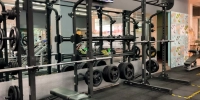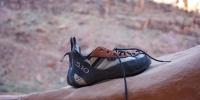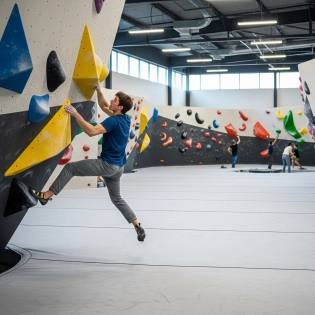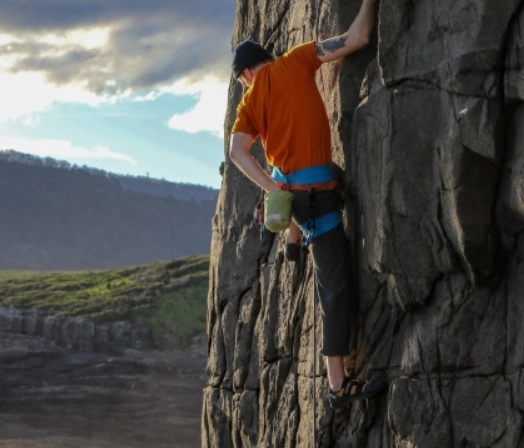







Climbers Point


Yes, climbing shoes do tend to stretch after a few weeks of use. Synthetic climbing shoes usually stretch just about half a size at most, and many times do not stretch at all, while leather shoes normally stretch between half a size to 2 full sizes.
This should be taken into consideration when buying climbing shoes, since if you get synthetic shoes and size down 2 sizes, expecting them to stretch 2 sizes, you are in for a disappointment since they will at most stretch only about half a size. The same goes for leather shoes, if you don't take into consideration that they will stretch and don't downsize, you will end up with very loose and floppy shoes.

You should not be able to freely wiggle your toes in climbing shoes. Your toes should be slightly bent downwards to give you better accuracy and the ability to apply the required amount of pressure and force from your toes when standing on small foot holds. If your toes wiggle in your shoes, you may not be able to actually apply the amount of force you need.
If your toes freely wiggle in your shoes, they may be slightly too loose, or the shoes may just not fit the shape of your foot.

It is completely normal for your toes to feel sore in climbing shoes, especially if you are a beginner, and you are not used to them, or if you have downsized your shoes a lot. Everyone can have different toes that hurt, the big toe is a quite common one.
Though some amount of pain is considered normal, if you have throbbing pain that lasts even after you take your shoes off, then you may either have shoes that are too small and tight, or the shoes just don't fit the shape of your feet.
Finding the right climbing shoe that actually fits your feet is crucial. Not only to find the right size, but also the right shape, one that will fit your feet. This can really help ease most of the pain and discomfort that comes with climbing shoes.

Climbing shoes are small and much less bulky than everyday shoes to provide better precision, accuracy, sensitivity, and grip on climbing holds. In addition to this, the tightness and minimal material of the shoes, and the minimal dead space within the shoes, allow them to support the climbers and hold their weight when they need to stand on tiny foot holds.
Climbing shoes are created specifically to help maximize how climbers use their feet while climbing. For example, if a climber would need to do a heel hook on a small hold, in larger, everyday shoes, the climbers feet would just slip off the hold rather than actually hold their weight.
This is because normal everyday shoes have a lot more soft rubber on the bottom of the shoes, and a lot of dead space between the shoe and the foot. This soft rubber prevents climbers from being able to actually put their weight on small climbing holds, because the rubber is too soft to actually have any kind of grip on the holds, and it's too soft to hold the climbers weight, so the shoes just slip right off.
The dead space in everyday shoes is also an issue for climbing, it reduces the shoes effectiveness in certain moves such as heel hooking.
This is why climbing shoes are typically very tight and small, it just gives climbers the best support for their footwork.





